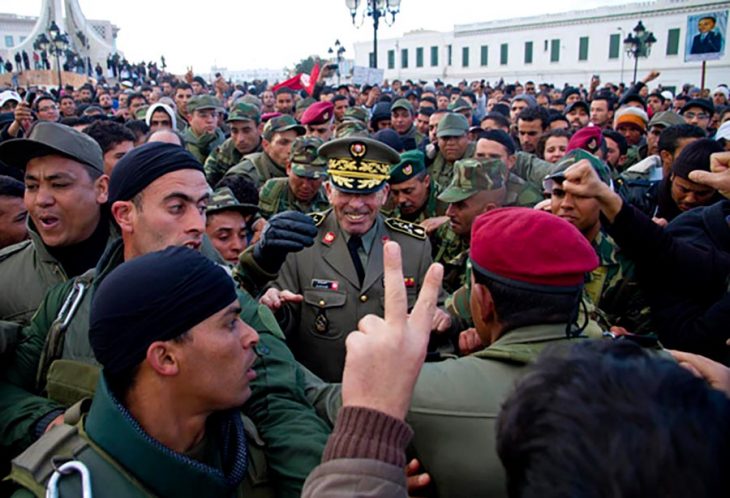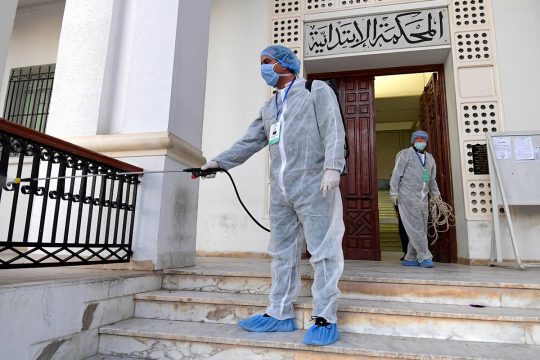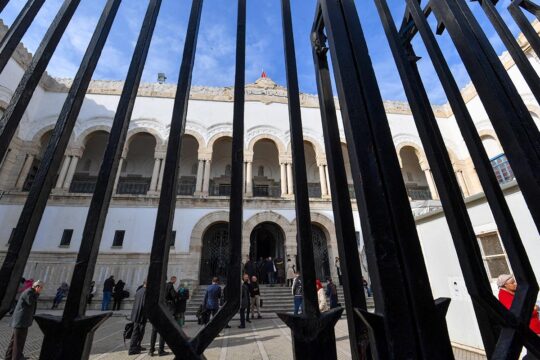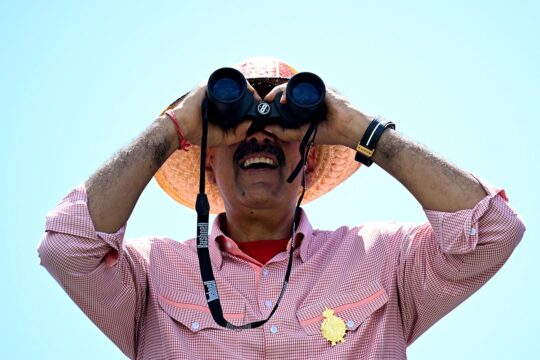He is one of the heroes of the revolution. General Rachid Ammar, 64 years old at the time of the events that marked Tunisia’s history, was admired by his troops for his Olympian calm and reasoned management of the crisis -- to the point that one of the opposition bloggers at the time of the dictatorship, young Yacine Ayari, portrayed him as a virtuous soldier trying to strike the coup de grace to the wavering power of former President Zine el-Abidine Ben Ali. "The man who said no," he titled a blog in early January 2011, claiming that the Chief of Staff had refused to carry out the president's orders to shoot at the crowds. The story spread like wildfire on social networks, further cementing the population's sympathy for a Republican army, despite the abuses committed during the revolution, especially after January 14, when Ben Ali fled to Saudi Arabia.
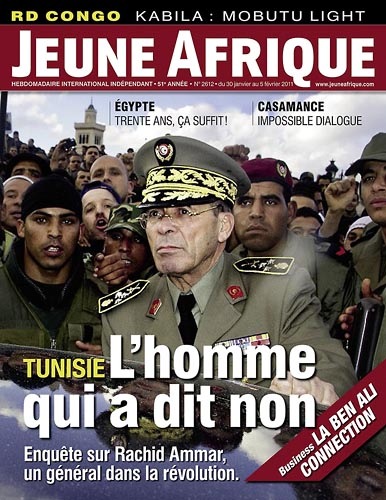
But on Monday, February 14, the general "who said no" appeared before the specialized transitional justice chamber in Tunis. In the morning he appeared as a witness in a murder case and in the afternoon as a defendant alongside other senior officials of the security apparatus, in relation to repression of a sit-in at the Kasbah, a central district of the Tunisian capital. The tragic events took place on February 25, 26 and 27, 2011, resulting in five deaths and several injuries.
Protesters forcibly removed
The second Kasbah sit-in, on Government Square at the entrance to the Medina, began on February 20, 2011. A first sit-in had been organized a month earlier by young people from all regions of Tunisia in this place symbolizing government power. During "Kasbah I", the demonstrators demanded socio-economic rights that had been violated for decades and the departure of government top dogs. But they stepped up their demands in "Kasbah II", calling for the resignation of Mohamed Ghannouchi, Prime Minister under Ben Ali and still in office after the dictator’s departure, as well as the election of a constituent National Assembly.
Five days after the sit-in started that icy February, the protesters were dislodged by force. They scattered around downtown Bourguiba Avenue, on Sadiki Street, Barcelona Square, the Passage, Madrid Avenue and Lyon Street. This is where, over three days, five young men -- two of them aged 17 -- were shot dead by security officers positioned alongside the soldiers.
Interior Ministry and army pass the blame
Last Monday, the specialized chamber confronted Farhat Rajhi, Interior Minister at the time of the events, and General Ammar. For over two hours, these two tried to pass the buck and put responsibilities onto others. Before the Truth and Dignity Commission (IVD), which heard Rajhi twice in 2018, the former minister had said that the army Chief of Staff became from the afternoon of January 14, 2011 "the strong man of the Interior Ministry", responsible for directing the ministry’s operations room and coordinating army and police forces.
But faced in court with the general, the former minister backtracked. He did not say "the orders were given by the general", but rather: "My prerogatives were limited to the management of administrative matters because I am a career judge and I do not master the workings of the security sector"; "Ask Ahmed Chabir, the director of national security, who worked in tandem with General Ammar, about the general’s role at the time of the events. I never set foot in the operations room.”
In another confrontation before the specialized chamber on the morning of February 14, Ahmed Friaâ, who was Interior Minister from January 12 to 27 and is accused in this case, said something similar to that of his successor: "I was appointed by Ben Ali to head a ministry which I didn’t know how to operate. When I told him 'I am a university student, I know nothing about security', the ex-president replied 'you will help us on political affairs and local development and you will know how to calm things down, your directors general will take care of security’.”
Intertwined responsibilities
In the indictment filed by the IVD and forwarded to the specialized chamber, General Ammar was cited in the case of young Anis Farhani’s death on January 13, 2011. This accusation came from the fact that from January 9, the day the army was deployed throughout Tunisia, a coordination structure was reactivated between the ministries of Interior and Defence: this was the Commission to Combat Disasters. The first meeting of this commission was attended by Interior Minister Rafik Haj Kacem (dismissed on January 13), Defence Minister Ridha Grira, head of the presidential guard Ali Seriati, and several high-ranking military officers including General Ammar and General Ahmed Chabir, director general of military security.
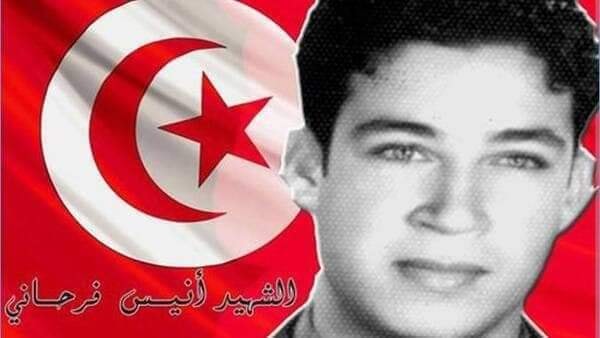
Anis's sister Lamia Farhani, who is a lawyer for the civil parties, explains: "It is this crisis structure that gave orders to the security agents on the ground. The chain of responsibility in the crimes committed during the revolution goes back to senior officials of the Interior Ministry, army and ruling party. This is why their presence [at this trial] is important to us: in our opinion, they are complicit in the extreme violence suffered by the demonstrators at that time.”
General Ammar denies any responsibility for the deaths that occurred during the revolutionary protests, including that of Anis Farhani. "There were never any attacks on our troops, whose mission was to secure the sovereign institutions. The protesters brandished only socio-economic claims," he said.
Militarisation of the Interior Ministry
Ilyes Bensedrine, former deputy director in charge of investigations at the IVD, explained to Justice Info why the IVD directed its charges of voluntary manslaughter and attempted murder against the senior military officer and not against the politician.
"General Ammar did everything to get the appointment in February 2011 of former head of military security General Ahmed Chabir as director of national security at the Ministry of Interior, resulting in the de facto militarization of this ministry. Thus, the de facto responsibility for the events of "Kasbah II" belongs to General Ammar. According to the Rome Statute, he has command responsibility in this case. The victims were dying for three days. He should have promptly opened an administrative investigation to stop the excessive violence of his agents.”
In a book about January 14 and the days after entitled "The Investigation", journalists Abdelaziz Belkhoja and Tarak Cheik Rouhou counted the number of victims who fell after January 14, when the much-hated police withdrew, depositing their weapons in the barracks and leaving most of the field to the army. On January 15, the authors counted 34 deaths by bullets, including 20 killed by the army. The next day, of the 18 "martyrs of the revolution", 10 were killed by the military. It was during the curfew that the soldiers fired with a weapon of war, the Styer rifle. Some inexperienced officers, students of the military academy called in as reinforcements during the state of emergency, fired deadly bursts. On the ground, the psychosis was general.
In four years of the specialized chambers’ operation, this is the first time that very senior members of the security apparatus have clashed over the truth of their responsibilities. None of the three men, two ministers and a general, called to the stand on Monday February 14 admitted any responsibility for the disproportionate use of lethal force against peaceful protesters. That was eleven years ago.
The court announced the next hearings for April 25, during which it decided to invite a representative of the Ministry of Defence, to question him about the movements of the army during the fateful days of February 25, 26, and 27, 2011.


